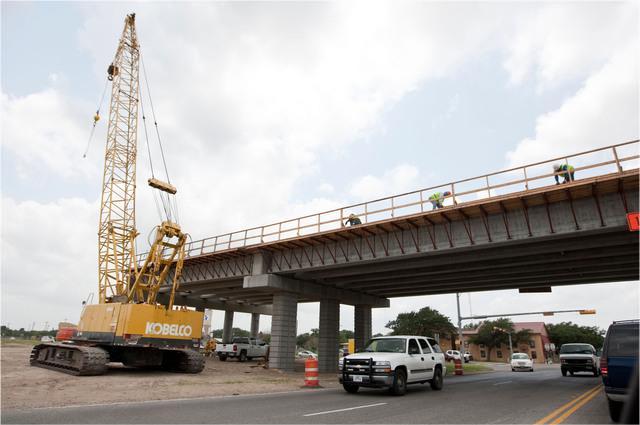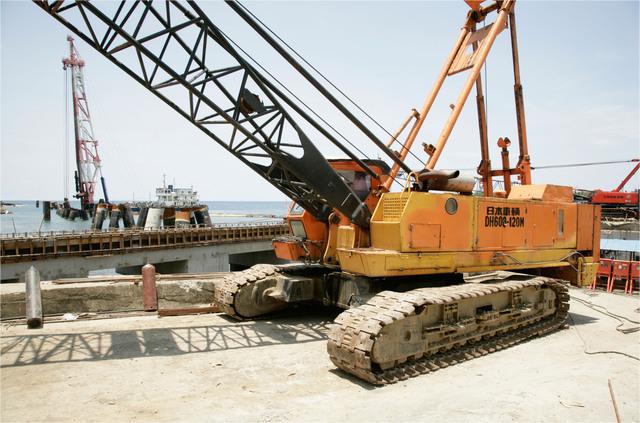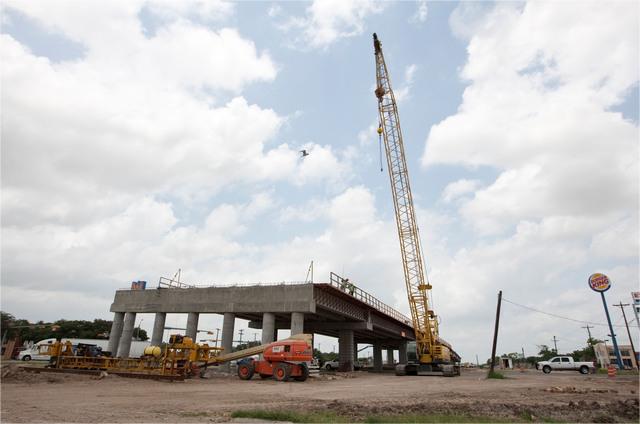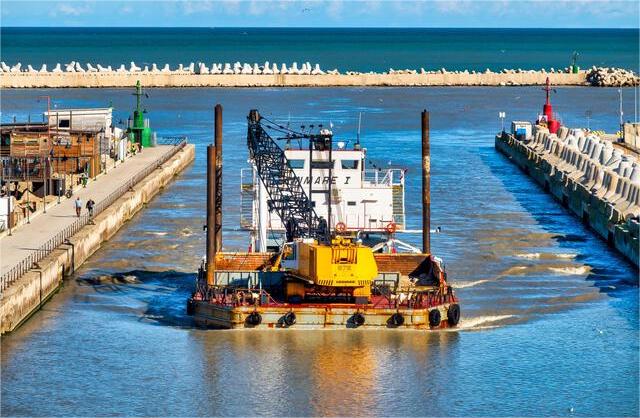Crawler cranes are versatile machines used in a wide range of industries for heavy lifting tasks. Understanding the operation temperature of crawler crane is essential for safe and efficient operation. In this blog, we will explore the craning temperature range, implications of cold weather on the fluidity of lubricating oil, electrical components, and hydraulic fluids, and industry-specific temperature requirements.
What's the operation temperature of crawler crane?

The craning temperature range for a crawler crane typically spans from -20°C to 40°C (-4°F to 104°F), signifying the optimal operating conditions. Operating within this temperature range ensures the smooth and safe functioning of the crane’s components, including lubricating oil, electrical systems, and hydraulic fluids.
Craning temperature below -20°C
In colder environments, where temperatures approach or drop below -20°C, precautions must be taken to address the challenges imposed by low temperatures. The operation temperature of crawler crane can affect the viscosity and fluidity of lubricants and hydraulic fluids, potentially leading to reduced efficiency and increased friction. To mitigate these issues, insulation, heating systems, and appropriate preheating procedures are implemented to maintain optimal performance.
Operation temperature above 40°C
Similarly, in hotter climates exceeding 40°C, the craning temperature can impact the cooling systems of the crane, increasing the risk of overheating. Effective ventilation, cooling mechanisms, and regular maintenance are vital to prevent performance issues and potential malfunctions.
What is the normal water temperature for a crawler crane?

The normal water temperature for crawler crane typically falls within the range of 70°C to 90°C (158°F to 194°F) when operating under normal conditions. However, it is important to note that the actual temperature can be adjusted based on specific circumstances.
The water tank in crawler crane
The crawler crane water tank is typically located within the crane’s structure or crane’s undercarriage. The specific position of the water tank can vary depending on the crane model and design. It is commonly situated in a designated compartment or space within the crane’s framework, often near the engine or hydraulic sy
Factors Affecting Water Temperature of Crawler Crane crawler tank
The water temperature of water tank is influenced by several factors. Here are the main factors:
the working condition of crawler crane
One significant factor is the working condition of the crane. The frequency of using the hydraulic cylinder, hydraulic pump, and hydraulic system can impact the water temperature of water tank. Intensive or prolonged use of these components may lead to increased water temperature.
ambient temperature
Another factor is the ambient temperature. Higher environmental temperatures will result in a corresponding rise in the water temperature of crawler crane. It is essential to consider the surrounding climate when monitoring and managing the water temperature.
quality of the oil
The quality of the oil used in the crane’s hydraulic system is also crucial. Using low-quality oil can contribute to elevated water temperatures. Regular maintenance and the use of high-quality lubricants are necessary to prevent such issues.
How to maintain an appropriate water temperature

To maintain the proper water temperature of crawler crane, the following steps can be taken:
Pay attention to lubrication
It is crucial to prioritize proper lubrication to maintain an appropriate water temperature. Ensure that the oil used in the crane's hydraulic system is clean and free from contaminants. Regularly monitor the oil quality and promptly replace it when necessary. Clean oil with optimal lubricating properties helps reduce friction and minimize wear and tear on the crane's components. By reducing friction, the heat generated is controlled, resulting in lower water temperatures.
Control working time
Managing the duration of crane operation plays a significant role in maintaining the desired water temperature. Avoid prolonged and continuous usage, especially under high-intensity conditions. Excessive and prolonged operation can increase the workload on the hydraulic system, leading to higher water temperatures. Implementing proper work schedules, rest periods, and rotation of machinery can prevent overheating and promote optimal water temperature of water tank.
Strengthen maintenance
Regular and thorough equipment maintenance is essential for ensuring the crane operates within the appropriate water temperature range. Conduct routine inspections to identify any potential issues that may contribute to increased water temperature. Pay special attention to components such as the oil pump, hydraulic cylinder, and other relevant parts. Clean these components regularly to remove accumulated dirt, debris, or contaminants that can hinder proper functioning and cause elevated water temperatures. Additionally, schedule periodic maintenance sessions to address any identified problems promptly and ensure the crane's overall performance and efficiency.
Issues Arising from Exceeding or Falling Below the Operation Temperature

Deviation from the recommended working temperature range of a crawler crane can lead to various problems. Here are the potential issues associated with exceeding or falling below the optimal operation temperature of crawler crane:
Exceeding the Craning temperature
- Lubricating oil can deteriorate and cause engine burning when operating at high temperatures. The oil’s oxidative stability decreases, leading to increased thermal decomposition, oxidation, and polymerization.
- Dust in dry air and moisture in humid air can contaminate the lubricating oil by entering through the engine’s intake system and crankcase ventilation, causing oil degradation.
- During high-temperature operation in summer, the lubricating oil passing through overheated areas such as cylinder walls, pistons, piston rings, journal bearings, and oil sump is prone to evaporation and burning. Increased component wear occurs as the engine operates at high temperatures, with metal parts experiencing significant thermal expansion and reduced normal clearances between parts, leading to heightened wear.
- Engine components operating at high temperatures tend to accumulate more carbon deposits and sticky residues on piston crowns, combustion chamber walls, valve heads, and other parts. This reduces the thermal conductivity of metal components, accelerating mechanical damage.
- Due to engine overheating, the oil becomes thinner, resulting in decreased oil pressure and reduced formation of lubricating oil film. This further accelerates component wear.
Falling below the Operation temperature
- Increased risk of component failure: When the operation temperature of crawler crane drops too low, the viscosity of lubricants and hydraulic fluids can increase, impairing their ability to flow smoothly. This can result in inadequate lubrication, reduced hydraulic efficiency, and increased stress on the crane’s moving parts, potentially leading to component failures.
- Reduced flexibility and responsiveness: Cold temperatures can affect the responsiveness of hydraulic systems and electrical components, causing delays or sluggish movements. This can impair the crane’s ability to perform precise and controlled operations.
- Potential damage from freezing: If the temperature falls below freezing, there is a risk of water or moisture inside the crane’s systems freezing, leading to blockages, damaged seals, and potential ruptures in hydraulic lines or other components.
Maintaining Optimal Operation Temperature for Crawler Crane

Maintaining the proper operation temperature of crawler crane is essential for its performance and longevity. Operating above this range can result in reduced efficiency, accelerated component wear, and safety hazards. Excessive heat causes friction, slower movements, and increased maintenance costs. Operating below the recommended range leads to viscosity issues, component failures, and sluggish movements. Freezing temperatures can cause blockages and damage. To ensure the right temperature, follow manufacturer guidelines, monitor temperature conditions, implement proper warm-up and cool-down procedures, and maintain ventilation and cooling systems. Regular lubrication and fluid maintenance are crucial. Consider environmental factors and adjust procedures accordingly. By operating within the recommended temperature range, you can optimize the crawler crane’s performance, extend its lifespan, and promote a safe working environment.







